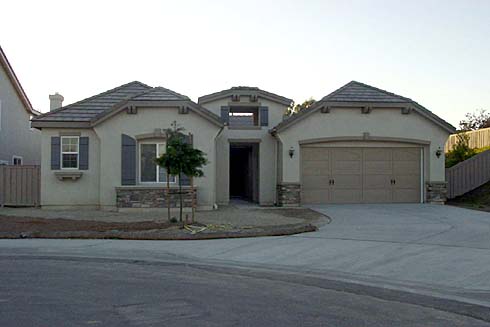SINGLE-FAMILY RESIDENCE (UNIT)
Embracing the Essence of Single-Family Residences: A Home for One
Introduction:
Defining Single-Family Residence (Unit):
A single-family residence (unit) is a housing unit meticulously designed and maintained for the exclusive occupancy of a single family. In this context, a 'family' typically refers to individuals who are related by blood, marriage, or adoption. These residences are a cornerstone of residential real estate, embodying the idea of a private and dedicated space for a singular household.
Key Characteristics of Single-Family Residences:
Exclusivity of Occupancy:
The defining characteristic of a single-family residence is its exclusivity for one family. Unlike multi-family or commercial properties, these homes are tailored to meet the specific needs of a single household, offering a sense of privacy and personal space.
Design Tailored for Families:
Single-family residences are thoughtfully designed to cater to the needs and preferences of a family unit. Features such as bedrooms, common living spaces, and private yards contribute to the comfort and functionality of these homes.
Zoning and Subdivision Regulations:
Zoning ordinances and subdivision regulations often play a crucial role in defining the use of certain land for single-family residences. These regulations set the framework for the type of structures that can be built, the density of housing, and the overall character of residential neighborhoods.
Community Living:
While designed for individual families, single-family residences contribute to the fabric of a larger community. Residential neighborhoods, comprised of these units, often foster a sense of community living with shared amenities, local schools, and recreational spaces.
Real Estate Implications:
Understanding the role of single-family residences in real estate is essential for homebuyers, sellers, and developers. Here are some key implications:
Homeownership and Privacy:
Single-family residences represent the epitome of homeownership, offering a private and dedicated space for a family to call their own. The exclusivity of these homes aligns with the desire for personal privacy and a sense of ownership.
Impact of Zoning:
Zoning ordinances directly influence the nature of single-family residences. These regulations guide the development of residential areas, shaping the character of neighborhoods and influencing property values.
Market Demand and Trends:
The demand for single-family residences often reflects broader societal trends. Factors such as lifestyle preferences, family structures, and work-from-home arrangements can influence the market dynamics for these homes.
Investment Considerations:
For real estate investors and developers, understanding the market dynamics of single-family residences is crucial. Identifying trends, adhering to zoning regulations, and catering to the evolving needs of families contribute to successful investment strategies.
Investment Considerations:
For real estate investors and developers, understanding the market dynamics of single-family residences is crucial. Identifying trends, adhering to zoning regulations, and catering to the evolving needs of families contribute to successful investment strategies.
Conclusion:
In the ever-evolving landscape of real estate, the single-family residence remains an enduring symbol of home and family life. From the carefully designed spaces that cater to the needs of a single household to the regulatory framework that shapes residential communities, these homes embody the essence of personal living and homeownership. As the real estate market continues to evolve, the significance of single-family residences persists, offering a timeless foundation for the dreams and aspirations of countless families.
MORE REAL ESTATE TERMS
A, B, C, D, E, F, G, H, I, J, K, L, M, N, O, P, Q, R, S, T, U, V, W, X, Y, Z
Featured New Home

Featured Mortgage Brokers
- COBALT MORTGAGE, EVERETT, WA
2825 COLBY AVE STE 305
EVERETT, WA 98201 - INDEPENDENT BANK, MT PLEASANT, MI
319 E BROADWAY ST
MT PLEASANT, MI 48858 - TOP FLITE FINANCIAL INC, WEST LINN, OR
1800 BLANKENSHIP RD STE 200
WEST LINN, OR 97068 - Priority Mortgage Corp., mortgage broker in Worthington, OH
150 E Wilson Bridge Rd Ste 350
Worthington, OH 43085 - CSTONE MORTGAGE INC, SAN DIEGO, CA
4545 MURPHY CANYON RD STE 213
SAN DIEGO, CA 92123